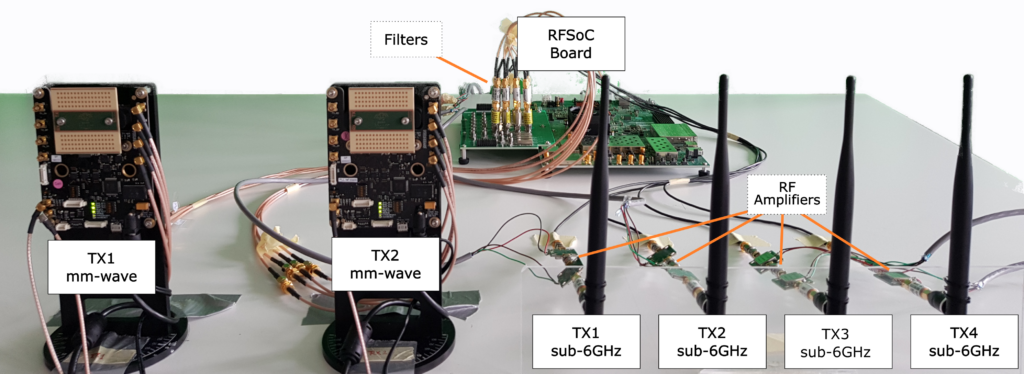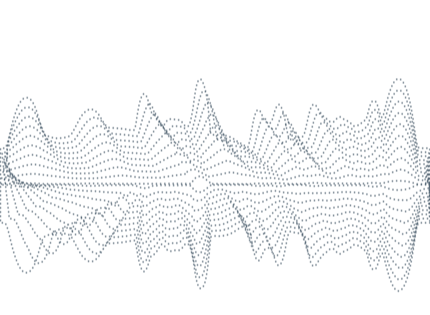MIMORPH
The performance of wireless communication systems is evolving rapidly, making it difficult to build experimentation platforms that meet the hardware requirements of new standards. The bandwidth of current systems ranges from 160 MHz for IEEE 802.11ac/ax to 2GHz for Millimeter-Wave (mm-wave) IEEE 802.11ad/ay, and they support up to 8 spatial MIMO streams. Mobile 5G and beyond systems have a similarly diverse set of requirements.
To address this, we propose a highly configurable wireless platform that meets such requirements and is both affordable and scalable. It is implemented on a single state-of-the-art FPGA board that can be configured from 4×4mm-wave MIMO with 2 GHz channels to 8×8 MIMO with 160 MHz channels in sub-6 GHz bands. In addition, multi-band operation will play an important role in future wireless networks and our platform supports mixed configurations with simultaneous use of mm-wave and sub-6 GHz. Finally, the platform supports real-time operation, e.g., for closed-loop MIMO beam training with low-latency, by implementing suitable hardware/software accelerator.

Mixed Design
The repository contains 5 different designs:
–4×4 sub-6 GHz Channels+2×2 mm-wave -> stores a mixed design with 2×2 mm-wave 2GHz bandwidth channels and 4×4 sub-6GHz 160MHz bandwidth channels.
–4×4 mm-wave 5 bits -> stores a MIMO 4×4 mm-wave 2GHz bandwidth design with reduced resolution (5 bits ADCs).
–4×4 mm-wave packet detection -> contains a MIMO 4×4 mm-wave 2GHz bandwidth design with packet detection and inter-frame configuration with full resolution (16 bits ADCs).
–4×4 mm-wave closed loop experiment (AP) -> this design is used for the Closed loop beam training experiment. The AP will start the training by send TRN fields and then decode the feedback packet coming from the STA.
–4×4 mm-wave closed loop experiment (STA) -> this design is used for the Closed loop beam training experiment. The STA will compute the CIR values of the different TRN fields and will choose the best BP. Then it will encode a message to be sent to the AP.

Receiver path configurations: 1.- 4×4 mm-wave Channels; 2.-8×8 sub-6 GHz Channels ; 3.-4×4 sub-6 GHz Channels+2×2 mm-wave Channels
We provide the code, design files and guides to replicate MIMORPH. Find the guide here and the link to the repository below:
Download here
If you use it in your research work, please acknowledge the source and cite the publication.
Link to Publication:
Jesus Omar Lacruz, Rafael Ruiz and Joerg Widmer
In The 19th Annual International Conference on Mobile Systems, Applications, and Services (MOBISYS), 2021.
